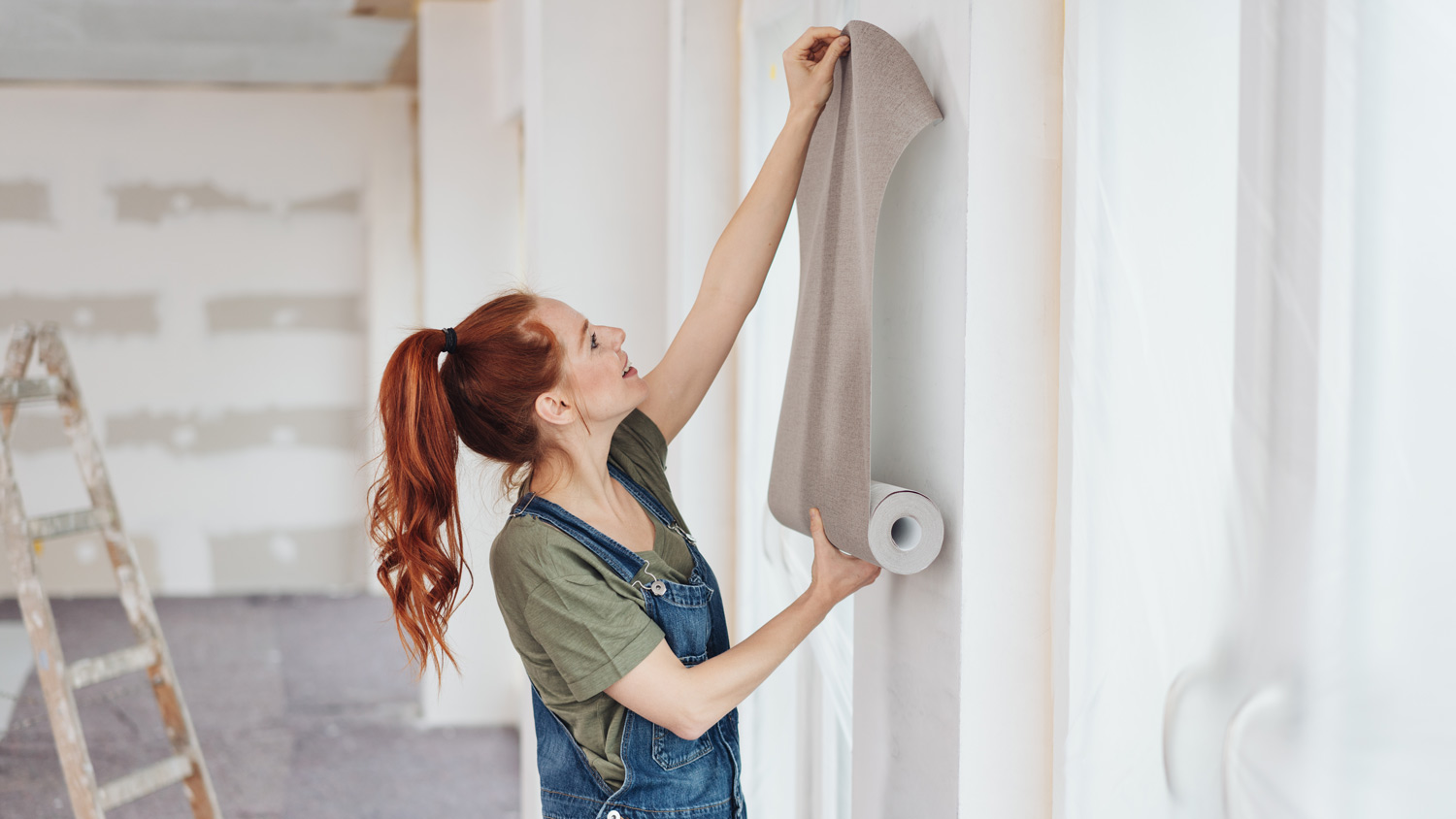
Discover wallpaper installation cost. Learn about material, labor, and project factors to estimate your budget and make informed choices for your home.
It's time to cover the mistakes of the past


Adding wallpaper over paneling refreshes a room quickly.
You'll need to do some prep before you install the wallpaper.
Some types of wallpaper, notably heavy-duty options, are better than others.
If you're not confident in your DIY skills, you can hire a wallpaper installer.
The 1980s called, and they'd like their wood paneling back. If you're tired of staring at dated walls, you may be wondering: Can you install wallpaper over paneling to update your home? You can, but you'll need to prep the paneling first to ensure a smooth and neat finish.
Putting wallpaper on top of paneling eliminates a labor-intensive step: removing the paneling itself. While removing paneling takes less time than putting it up, it's still a relatively involved, messy process.
Another benefit of using wallpaper to cover wood paneling is that it lets you breathe new life into a room. If you're getting tired of staring at wood-paneled walls, adding wallpaper gives you the freedom to switch up the color or pattern. You can add an accent wall or other decorative features to express your creativity.
A potential drawback of applying wallpaper directly on top of paneling is that if the work isn't done well, it's possible to see the panels underneath. You'll also need to take the time to fully prep the paneling to ensure good adhesion and minimize the chance of the wallpaper peeling away.
Some types of wallpaper are better suited for use over wood paneling than others. Ideally, you'll choose a heavy-duty paper, which can help to cover up and smooth over any remaining imperfections in the wood.
You may want to choose a paintable heavy-duty paper so you can choose the color later or change the paint color when your tastes change. Another option is to use the thicker wallpaper as a base coat or primer, then install a thinner or more delicate paper over the top. Expect to pay between $1 and $6 per square foot for the wallpaper material.
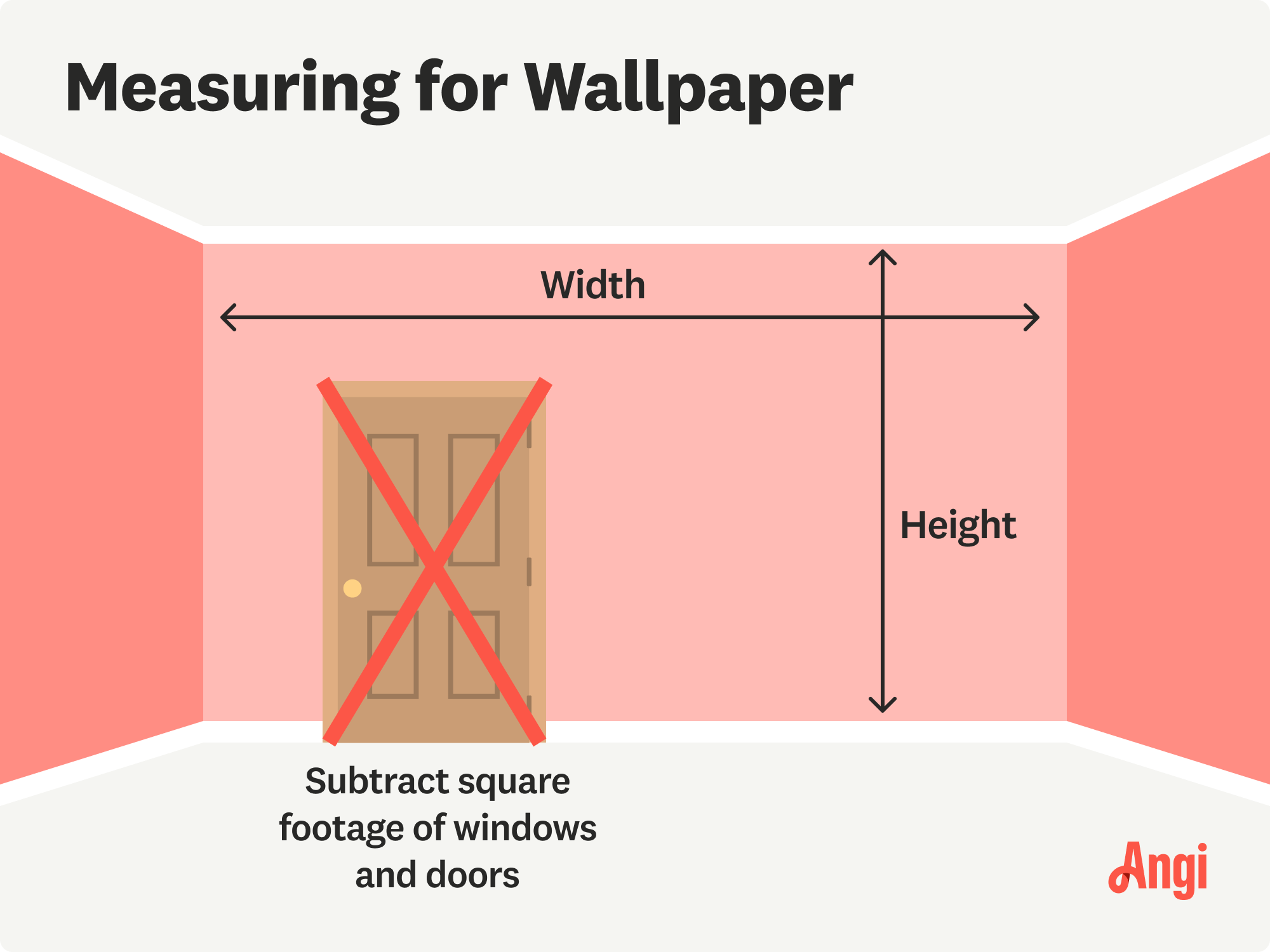
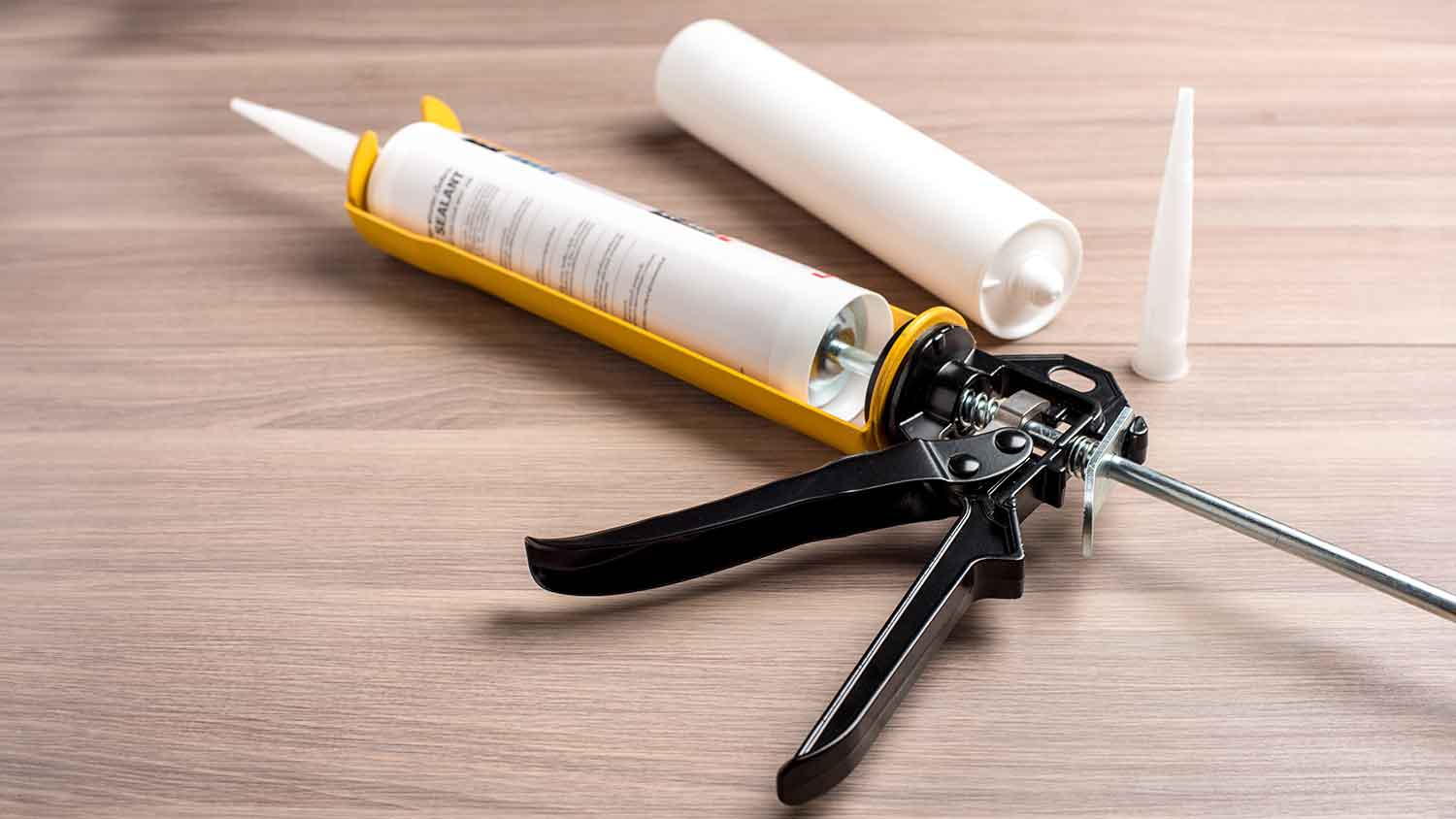
Before hanging wallpaper, give yourself a clean, blank slate to ensure it adheres well and to minimize any imperfections.
Wood paneling often has grooves, which imitate the look of individual panels. Depending on the depth of the grooves, your best bet is to apply a line of caulk to them to create a smooth surface. It's a good idea to caulk grooves that are 1/4 inch or deeper.
To create a grippy surface for the wallpaper to cling to, sand the wood paneling, then wipe clean with a cloth to remove any dust. Use soapy water to thoroughly clean the paneling, removing any lingering traces of dust, and let it dry.
For extra adhesion, you can apply a coat of primer to the paneling before installing the wallpaper.
If that seems like a lot of steps and work, consider hiring a professional wallpaper installer near you. They can assess the state of your current walls and recommend the best way to proceed, whether it's installing over the paneling or removing it. If you hire a pro for wallpaper installation, you'll pay an average of $570, though the price varies depending on room size and wallpaper material.
From average costs to expert advice, get all the answers you need to get your job done.

Discover wallpaper installation cost. Learn about material, labor, and project factors to estimate your budget and make informed choices for your home.
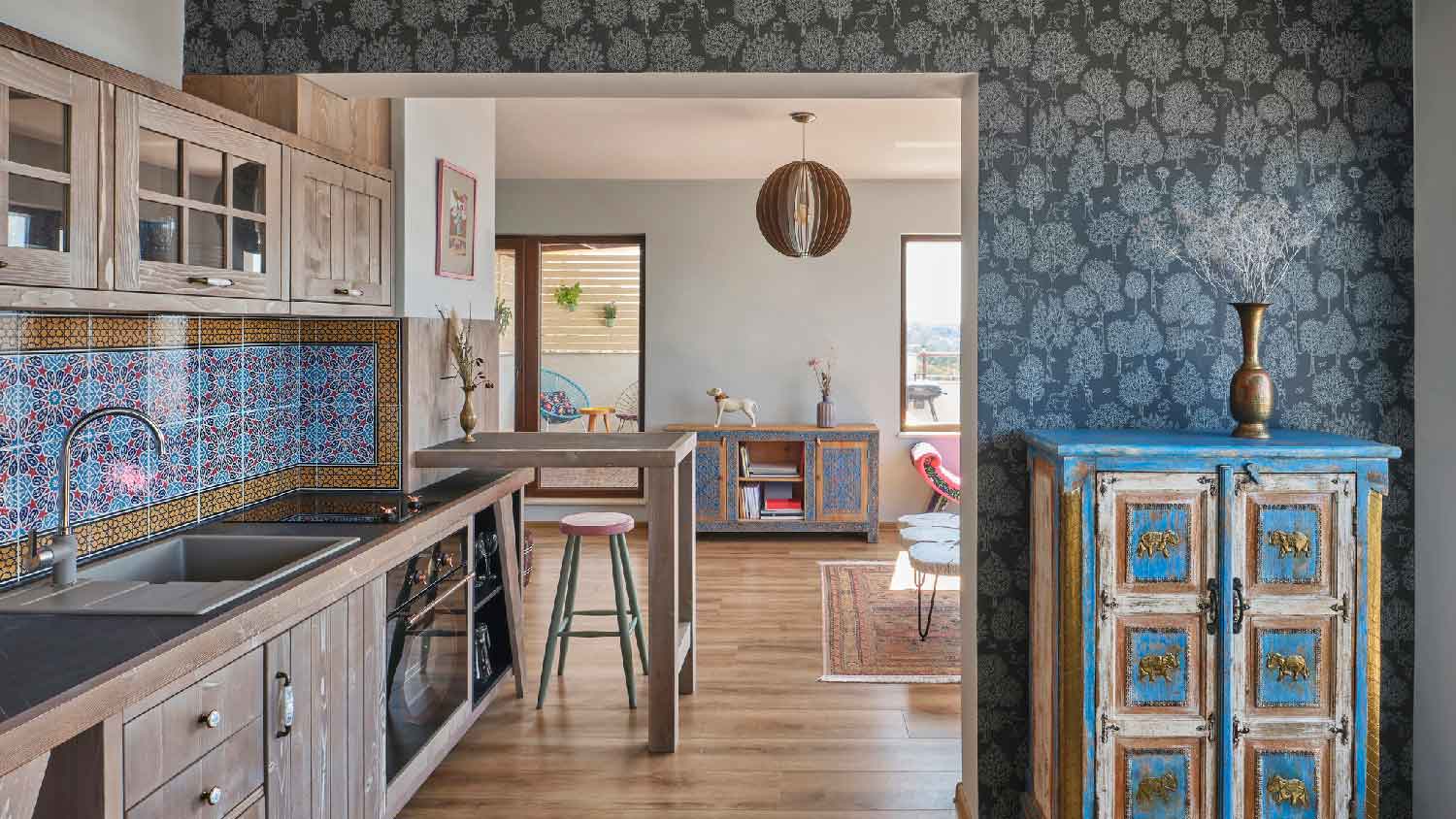
Does peel-and-stick wallpaper damage walls? Ultimately, it depends on application, adhesive strength, and even removal techniques. Find out more in this guide.
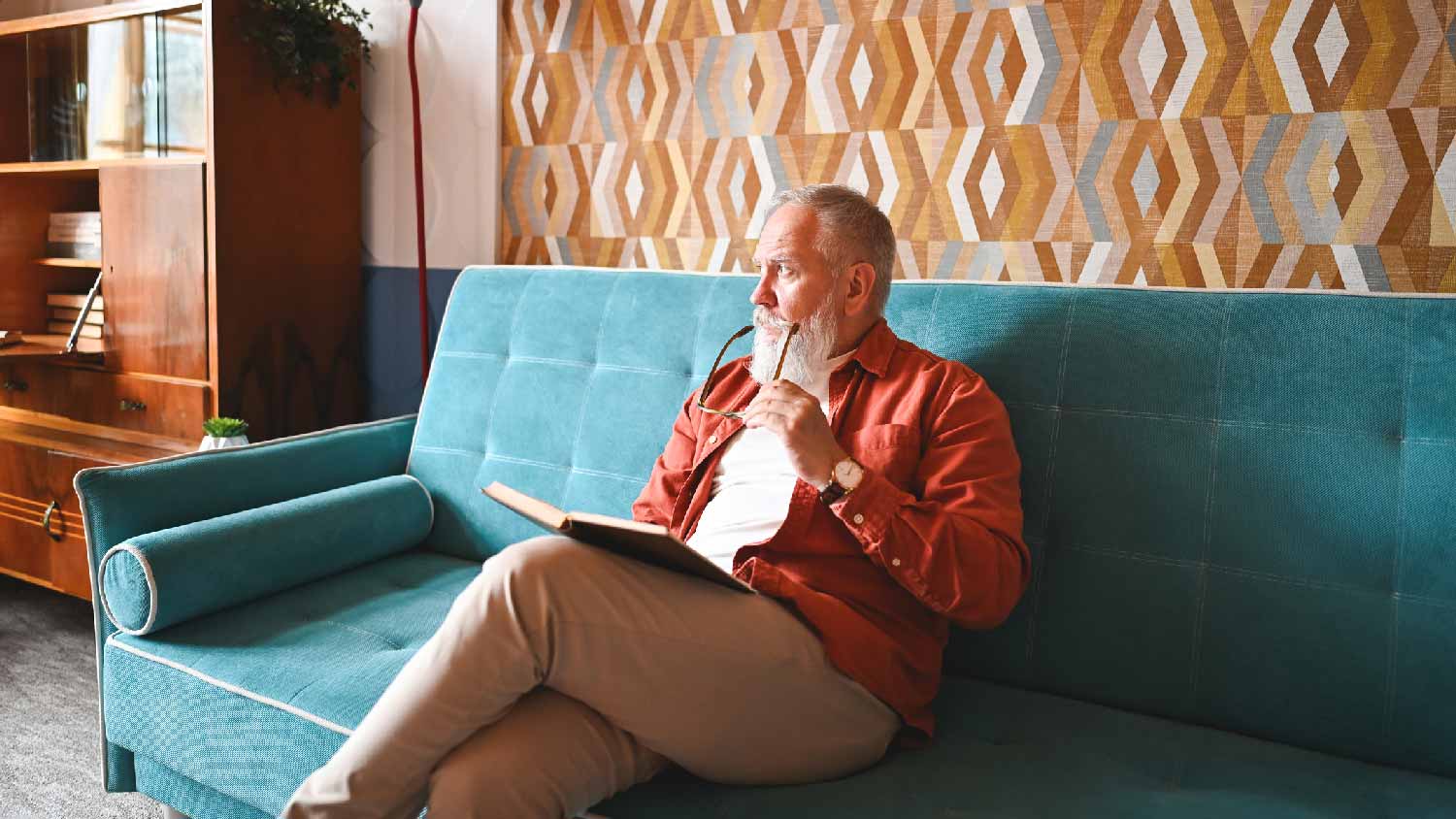
After ripping out old wallpaper, you may be left wondering, “How do I remove wallpaper paste from the walls?” Here’s how to get rid of old wallpaper glue.

How long does peel-and-stick wallpaper last? Learn more about the factors that influence the lifespan of removable wallpaper, including quality and material.

Struggling to choose between wallpaper versus paint for your interior space? Learn how these options compare and which is best for your next project.

Love the look of wallpaper, but not sure which type is best? Learn the differences between peel-and-stick versus traditional wallpaper in this guide.